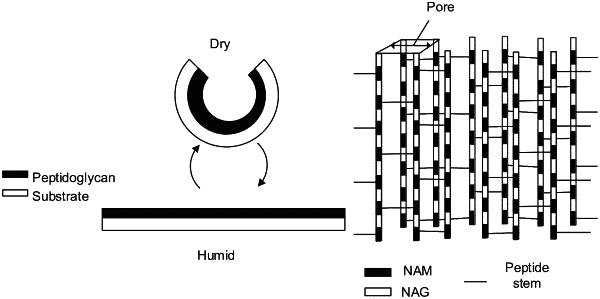| CPC C08B 37/0081 (2013.01) [B25J 9/0015 (2013.01); B25J 9/1075 (2013.01); C09D 105/00 (2013.01); F03G 7/06 (2013.01); B25J 9/1095 (2013.01)] | 17 Claims |

|
1. A method for actuating an artificial muscle, the method comprising:
exposing a flexible substrate to air with a first humidity, wherein the flexible substrate comprises a surface that is coated with a peptidoglycan from a bacterial cell wall; and
exposing the substrate to air with a second humidity, different than the first humidity, wherein the second humidity causes a change in hygroscopic expansion or contraction of the peptidoglycan, thereby actuating the substrate.
|